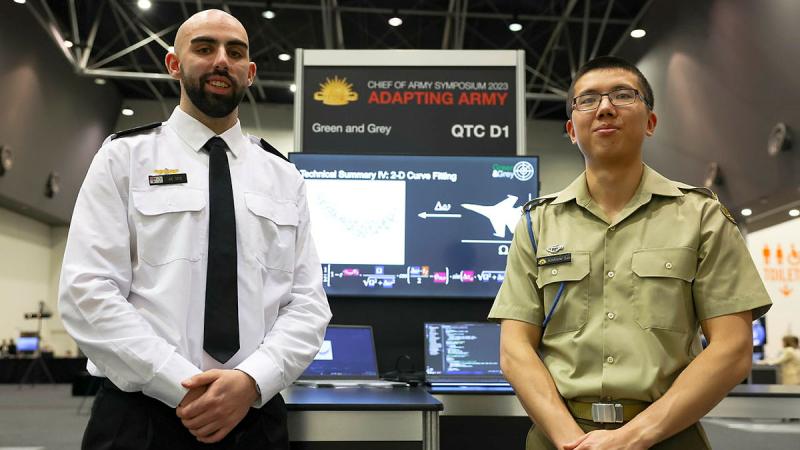Quantum Technology
Quantum technology presents both strategic risk and opportunity for Army in an accelerated warfare environment. Its true capabilities, limitations and most disruptive applications are still being discovered.
Army’s Quantum Technology Roadmap outlines how we will gain and retain an early advantage through identifying the high value applications of the technology in the land domain.
Emerging quantum technologies exploit the fundamental laws of nature and have unprecedented capabilities for Army in sensing and imaging, communications and cryptography, and computing and simulation.
Army is challenging Australian academia and industry to push the bounds of what we currently understand and leverage the significant investment in a world-class research and industry capability.
Building a Quantum AdvantageArmy’s Quantum Technology Challenge (QTC) is a series of technology challenges that sees world-leading quantum scientists and engineers competing to show how quantum technologies can solve important Army problems and deliver unprecedented capabilities. |

Fishing for clear information in a sea of noiseQuantum sensors can produce unprecedented levels of data and increased fidelity. But the massive amounts of noise and information they produce can be difficult to process and understand. Enter Able Seaman Joe Toce and Signaller Andrew Lei – course mates from recently completed joint basic cyber training – who turned a complex equation into an algorithm that will hopefully make sense of quantum radar signals.
|

Quantum Technology: An introductionThe trouble with quantum technology is that it seems impenetrable, improbable and impractical. In this post, I accordingly aim to demystify quantum technology for defence personnel by answering the key introductory questions: What are quantum technologies? How do they work? What do they do and why are they advantageous?
|

Quantum Technology: The Defence ImperativeQuantum technologies are a suite of many heterogeneous technologies that have varying degrees of current readiness and future development timelines. Their applications are rapidly evolving and expanding, with many yet to be discovered. These applications span a broad range of sectors including science, industry, government and defence.
|

Quantum Technology: Sensing and imagingQuantum sensors measure time, dynamics (i.e. forces, acceleration and rotation), and fields (i.e. gravitational, electromagnetic and mechanical) with unprecedented precision and stability. Imaging is an extension of quantum sensing where quantum sensors are combined with an imaging apparatus (e.g. a probe that scans the position of the sensor, an array of sensors or a beam of electromagnetic waves prepared in a quantum state) to perform high-resolution microscopy or macroscopy (e.g. radar) with unprecedented sensitivity.
|

Subterranean Detection Using GravityThe 2023 Defence Strategic Review has brought into sharp focus the Indo-Australian Archipelago. This chain of islands could be a difficult untrusted littoral environment that Army must learn to work around, where of prominence is the need to know structure inside, under and next to islands and coastlines. Such structures can’t be seen using existing detection techniques.
|
Further reading
- Quantum Technology - An introduction and the strategic imperative
- Outcomes of Quantum Next Generation 2021 and Quantum Camouflage Challenge 2021
- Army Quantum Technology Challenge 2022
- Quantum Next Generation Radar Challenge 2022
- Army Quantum Technology Challenge 2021
- A preview of Quantum Technology Challenge 2022
- Launch of the Army Quantum Technology Roadmap



